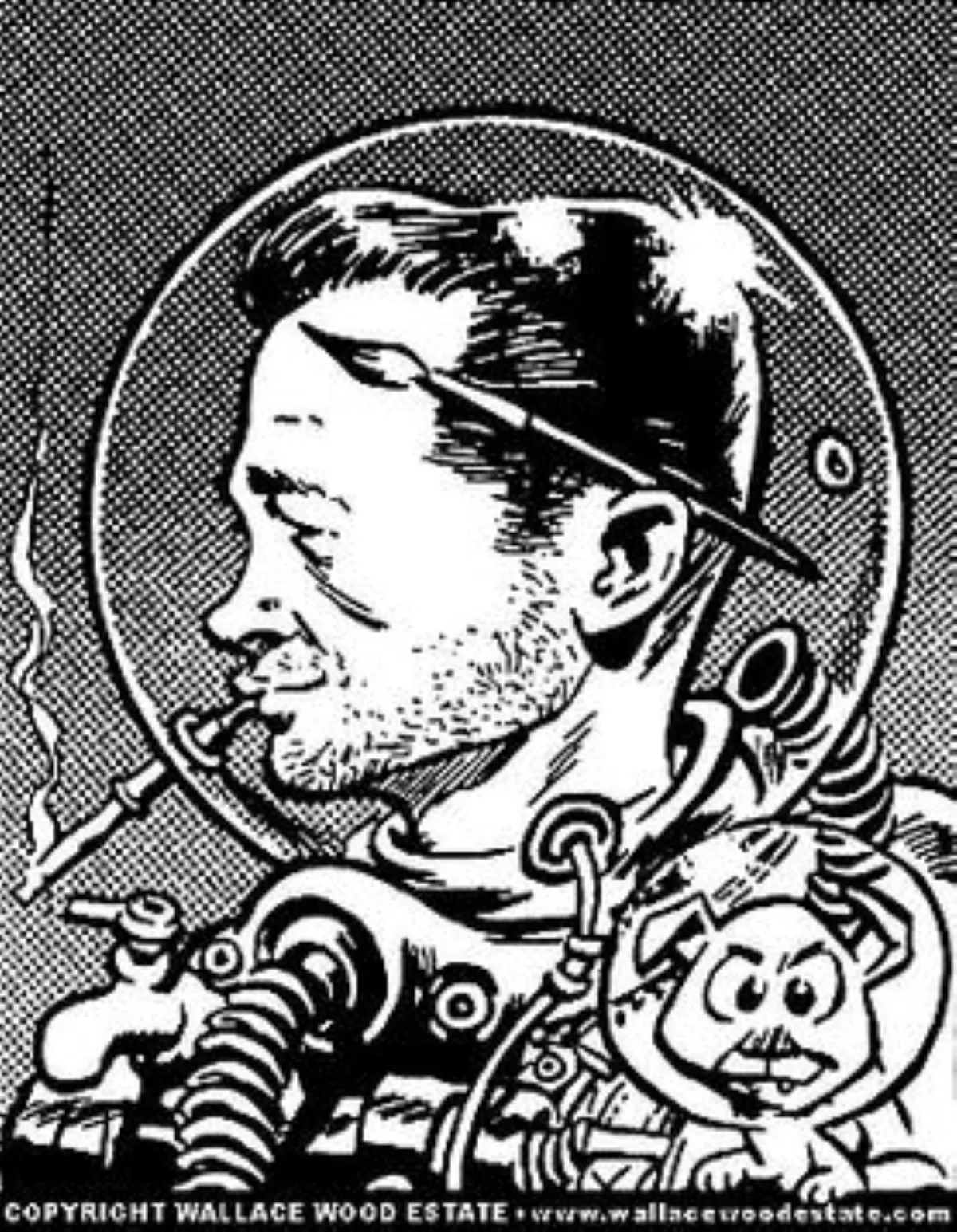 1.
1. Wally Wood drew a few early issues of Marvel's Daredevil and established the title character's distinctive red costume.

 1.
1. Wally Wood drew a few early issues of Marvel's Daredevil and established the title character's distinctive red costume.
Wally Wood created and owned the long-running characters Sally Forth and Cannon.
Wally Wood wrote, drew, and self-published two of the three graphic novels of his magnum opus, The Wizard King trilogy, about Odkin son of Odkin before his death by suicide.
Wally Wood was the inaugural inductee into the comic book industry's Jack Kirby Hall of Fame in 1989, and was inducted into the Will Eisner Comic Book Hall of Fame in 1992.
Wallace Wally Wood was born June 17,1927, in Menahga, Minnesota.
Wally Wood began reading and drawing comics at an early age.
Wally Wood was strongly influenced by the art styles of Alex Raymond's Flash Gordon, Milton Caniff's Terry and the Pirates, Hal Foster's Prince Valiant, Will Eisner's The Spirit and especially Roy Crane's Wash Tubbs.
Wally Wood graduated from high school in 1944, signed on with the United States Merchant Marine at the close of World War II and enlisted in the US Army's 11th Airborne Division in 1946.
Wally Wood went from training at Fort Benning, Georgia, to occupied Japan, where he was assigned to the island of Hokkaido.
In 1947, at age 20, Wally Wood enrolled in the Minneapolis School of Art but only lasted one term.
Wally Wood briefly attended the Hogarth School of Art but dropped out after one semester.
At this studio Wally Wood learned that Will Eisner was looking for a Spirit background artist.
Wally Wood immediately visited Eisner and was hired on the spot.
Wally Wood cited his "first job on my own" as Chief Ob-stacle, a continuing series of strips for a 1949 political newsletter.
Wally Wood's next known comic-book art did not appear until Fox's My Confession No 7, at which time he began working almost continuously on the company's similar My Experience, My Secret Life, My Love Story and My True Love: Thrilling Confession Stories.
Wally Wood penciled and inked two stories in that issue: "I Was Unwanted" and "My Tarnished Reputation".
Wally Wood began at EC co-penciling and co-inking with Harry Harrison the story "Too Busy For Love", and fully penciling the lead story, "I Was Just a Playtime Cowgirl", in Saddle Romances No 11, inked by Harrison.
Wally Wood was instrumental in convincing EC publisher William Gaines to start a line of science fiction comics, Weird Science and Weird Fantasy.
Wally Wood penciled and inked several dozen EC science fiction stories.
Wally Wood had frequent entries in Two-Fisted Tales and Tales from the Crypt, as well as the later EC titles Valor, Piracy, and Aces High.
Wally Wood painted six covers for Galaxy Science Fiction Novels between 1952 and 1958.
Wally Wood expanded into book illustrations, including for the picture-cover editions of titles in the 1959 Aladdin Books reissues of Bobbs Merrill's 1947 "Childhood of Famous Americans" series.
Wally Wood wrote and drew the 1967 syndicated Christmas comic strip Bucky's Christmas Caper.
That same year, Wally Wood was a ghost artist for an episode of Prince Valiant.
Wally Wood worked on the Hercules Unbound series as well, providing inks for Jose Luis Garcia-Lopez and Walt Simonson.
Wally Wood penciled and inked All Star Comics and contributed to the creation of Power Girl by exaggerating the size of her breasts.
Active with the 1970s Academy of Comic Book Arts, Wally Wood contributed to several editions of the annual ACBA Sketchbook.
In 1966, Wally Wood launched the independent magazine witzend one of the first alternative comics, a decade before Mike Friedrich's Star Reach or Flo Steinberg's Big Apple Comix for which Wally Wood drew the cover and contributed a story.
Wally Wood offered his fellow professionals the opportunity to contribute illustrations and graphic stories that detoured from the usual conventions of the comics industry.
In 1969, Wally Wood created another independent comic, Heroes, Inc Presents Cannon, intended for his "Sally Forth" military readership as indicated in the ads and indicia.
In 1980 and 1981, Wally Wood did two issues of a completely pornographic comic book, titled Gang Bang.
Wally Wood struggled to be as efficient as possible in the often low-paying comics industry.
For much of his adult life, Wally Wood had chronic, unexplainable headaches.